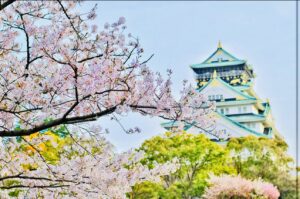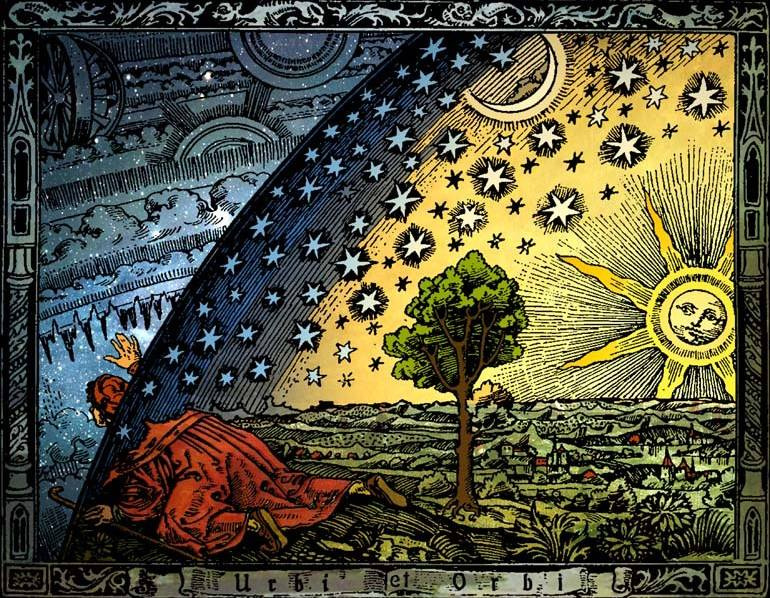Ogni primavera, il Giappone si trasforma in una tavolozza di colori straordinari grazie alla spettacolare fioritura dei ciliegi, un fenomeno localmente noto come “sakura”. Questo evento annuale va oltre il semplice risveglio della natura; è un simbolo culturale profondamente radicato che evoca sia la bellezza effimera dell’esistenza che l’unità della comunità. Il periodo della fioritura dei ciliegi attira milioni di visitatori da tutto il mondo, desiderosi di ammirare la bellezza fugace dei ciliegi e immergersi nelle tradizioni che li accompagnano.
Insieme, esploreremo il significato culturale della fioritura dei ciliegi in Giappone, approfondendo la sua storia, le implicazioni botaniche e l’impatto sulla società giapponese contemporanea. Dal profondo legame con il concetto di “mono no aware” – la consapevolezza della transitorietà delle cose – alla celebrazione dell’hanami, l’antica tradizione di apprezzare la bellezza dei fiori, ogni aspetto della fioritura dei ciliegi rivela qualcosa di unico sulla cultura giapponese.
Scopriremo come questa tradizione abbia radici storiche che risalgono a secoli fa e come continui a influenzare l’arte, la letteratura e le festività del Giappone. Inoltre, analizzeremo l’impatto economico e turistico della fioritura dei ciliegi, evidenziando come questo evento naturale abbia il potere di unire le persone, stimolare l’economia locale e promuovere la cultura giapponese a livello globale.
Attraverso questa esplorazione, cercheremo di comprendere meglio perché la fioritura dei ciliegi rimanga uno degli eventi più attesi e celebrati in Giappone, svelando le molteplici dimensioni di questo affascinante fenomeno.
Il Significato Culturale della Fioritura dei Ciliegi in Giappone
Storia e Radici Culturali
La fioritura dei ciliegi, o sakura, è intrisa di storia e significato nel tessuto culturale del Giappone. La sua celebrazione risale a oltre mille anni fa, inizialmente associata alle pratiche agricole per prevedere i raccolti. Col tempo, è diventata un simbolo di rinascita, speranza e bellezza effimera. La dinastia imperiale Heian (794-1185 d.C.) è riconosciuta per aver elevato l’hanami da un rituale agricolo a una raffinata celebrazione di corte, ponendo le basi per le tradizioni moderne associate alla fioritura dei ciliegi.
“Mono no Aware” e la Transitorietà della Vita
Al cuore della contemplazione dei sakura c’è il concetto di “mono no aware”, che può essere tradotto come sensibilità o empatia verso le cose. Questa espressione cattura la consapevolezza della transitorietà della vita, evidenziata dalla breve e splendida fioritura dei ciliegi, simbolo della bellezza fugace ma intensa dell’esistenza. Il ciclo vitale dei ciliegi, che fioriscono in una gloriosa esplosione di bellezza solo per svanire rapidamente, serve da metafora per la vita umana, ricordandoci di apprezzare e valorizzare ogni momento.
Sakura nell’Arte e nella Letteratura
L’influenza dei sakura si estende ampiamente nell’arte e nella letteratura giapponese. Nella poesia classica waka e haiku, i ciliegi sono un motivo ricorrente, simbolo di bellezza, rinascita e malinconia. Artisti come Hokusai e Hiroshige hanno immortalato la fioritura dei ciliegi nelle loro opere ukiyo-e, trasmettendo la loro bellezza effimera attraverso rappresentazioni delicate che rimangono icone culturali a livello mondiale.
Festival e Celebrazioni
La fioritura dei ciliegi coincide con numerosi festival e celebrazioni in tutto il Giappone, dove ogni regione può vantare tradizioni uniche. Il Festival Hanami è forse l’evento più iconico, una tradizione in cui famiglie, amici e colleghi si riuniscono sotto i ciliegi in fiore per picnic e feste che possono durare dal mattino fino alla notte. Questi raduni non sono solo occasioni per ammirare la bellezza dei fiori, ma anche per condividere cibo, bevande e canti, rafforzando i legami comunitari e familiari.
Riflessioni Contemporanee
Nell’era moderna, la fioritura dei ciliegi continua a essere un evento di grande significato in Giappone, con elementi contemporanei aggiunti a tradizioni secolari. Festival, concerti all’aperto, mostre d’arte e altri eventi culturali sono organizzati per celebrare l’arrivo della primavera e la fioritura dei ciliegi. La tecnologia moderna permette anche di prevedere con precisione l’inizio della fioritura, consentendo alle persone di tutto il mondo di partecipare a questo evento naturale attraverso trasmissioni in diretta e social media.
La fioritura dei ciliegi rappresenta quindi non solo un momento di celebrazione estetica e naturale, ma anche un profondo connubio di passato e presente, tradizione e modernità, che continua a definire l’identità culturale del Giappone.
La Scienza Dietro la Fioritura
Fondamenti Botanici dei Ciliegi
I ciliegi, o Prunus serrulata, appartengono alla famiglia delle Rosaceae e sono noti per le loro spettacolari fioriture primaverili. Questi alberi sono decidui, cioè perdono le foglie in inverno e fioriscono in primavera, segnando un simbolo di rinascita e nuovo inizio. La fioritura dei ciliegi dipende da vari fattori ambientali, tra cui la temperatura del suolo e le condizioni meteorologiche durante l’inverno e l’inizio della primavera. Tipicamente, i ciliegi richiedono un periodo di freddo invernale, noto come vernalizzazione, per superare la dormienza e innescare la fioritura una volta che le condizioni si riscaldano.
Il Ciclo di Fioritura
La fioritura dei ciliegi segue un ciclo affascinante e meticolosamente sincronizzato. Dopo il periodo di riposo invernale, l’aumento delle temperature segnala agli alberi che è il momento di risvegliarsi. I boccioli iniziano a formarsi e, nel giro di poche settimane, esplodono in una profusione di fiori che ricoprono l’albero. Tuttavia, questo spettacolo è di breve durata: i fiori, al loro apice, durano solo circa una settimana prima di cadere delicatamente, lasciando spazio alle foglie verdi. Questa rapida transizione aggiunge un senso di urgenza e apprezzamento per la bellezza fugace della natura.
Impatto del Cambiamento Climatico
Il cambiamento climatico sta influenzando il tempo e la distribuzione della fioritura dei ciliegi in Giappone e in altre parti del mondo. Studi recenti hanno mostrato che la fioritura sta avvenendo sempre prima, una tendenza attribuita all’aumento delle temperature globali. Questo anticipo non solo altera il ciclo naturale degli alberi, ma può anche avere impatti significativi sugli ecosistemi locali, influenzando la sincronia tra la fioritura dei ciliegi e la disponibilità di impollinatori come api e farfalle.
Inoltre, le variazioni climatiche estreme, come inverni più caldi seguiti da gelate improvvise, possono danneggiare i boccioli in via di sviluppo e influenzare negativamente la fioritura. Comprendere questi impatti è cruciale per la conservazione dei ciliegi e la pianificazione futura, poiché le comunità e gli agricoltori si affidano alla fioritura per le festività culturali e l’economia locale.
Sforzi di Conservazione
Di fronte a questi cambiamenti, sono in corso sforzi per preservare la tradizione della fioritura dei ciliegi. Questi includono ricerche su varietà di ciliegi più resilienti alle variazioni climatiche e la creazione di programmi di conservazione volti a proteggere gli ambienti naturali dei ciliegi. La consapevolezza e l’educazione sul ruolo che ogni individuo può svolgere nel mitigare gli effetti del cambiamento climatico sono essenziali per garantire che le generazioni future possano continuare ad ammirare questo straordinario fenomeno naturale.
Hanami
La Tradizione dell’Ammirare i Fiori
Origini ed Evoluzione di Hanami
L’hanami, che letteralmente significa “ammirare i fiori”, è una delle tradizioni più amate e antiche del Giappone. Le sue radici risalgono a oltre mille anni fa, quando aristocratici e poeti si riunivano sotto i ciliegi in fiore per comporre poesie e riflettere sulla transitorietà della vita. Originariamente legato alla contemplazione dei fiori di prugno, l’hanami si è gradualmente focalizzato sui ciliegi, diventando un simbolo di gioia, rinascita e bellezza naturale. Nel corso dei secoli, questa tradizione si è diffusa a tutte le classi sociali, evolvendosi in un’opportunità per festeggiare all’aperto con famiglia e amici.
Celebrazione Moderna dell’Hanami
Oggi, l’hanami è celebrato in tutto il Giappone con grande entusiasmo. Parchi, templi e castelli adornati di ciliegi diventano luoghi privilegiati per le feste hanami, che vanno da tranquilli picnic diurni a vivaci raduni notturni illuminati da lanterne. La preparazione per l’hanami può essere meticolosa, con persone che spesso si recano nei parchi all’alba per assicurarsi i posti migliori sotto i ciliegi in fiore.
La Gastronomia nell’Hanami
La gastronomia gioca un ruolo centrale nelle celebrazioni hanami. I partecipanti godono di cibi stagionali e tradizionali come il dango (palline di mochi), bento a tema ciliegia e bevande come il sake e il tè verde. L’hanami è anche un momento per indossare abiti tradizionali, come il kimono, aggiungendo un tocco di festosità e cultura all’evento.
Variazioni Regionali
Mentre l’essenza dell’hanami è condivisa in tutto il Giappone, ci sono variazioni regionali che riflettono le peculiarità locali e le varietà di ciliegi. Ad esempio, nella regione del Tohoku, l’hanami può avvenire più tardi a causa del clima più freddo, mentre a Okinawa, più a sud, la fioritura e le celebrazioni si svolgono già a gennaio. Ogni area vanta luoghi famosi per l’hanami, offrendo non solo meravigliose viste sui ciliegi in fiore ma anche un assaggio unico della cultura e delle tradizioni locali.
Hanami nell’Era Digitale
Con l’avvento della tecnologia e dei social media, l’esperienza dell’hanami è evoluta. Molte persone condividono online foto e impressioni dei fiori, estendendo la gioia dell’hanami ben oltre i confini fisici dei parchi e invitando una comunità globale a partecipare virtualmente. Inoltre, applicazioni e siti web forniscono aggiornamenti in tempo reale sul progresso della fioritura, aiutando le persone a pianificare le loro celebrazioni e a non perdere il momento magico della piena fioritura.
L’hanami rimane una delle tradizioni più radicate e amate del Giappone, un vivido promemoria della bellezza naturale e della connessione umana. Attraverso questa celebrazione, il Giappone abbraccia la rinascita annuale della natura, rinnovando un senso di comunità e condivisione che risuona profondamente nella società.

Impatto Economico e Turistico della Fioritura dei Ciliegi in Giappone
Valorizzazione Economica dei Sakura
La fioritura dei ciliegi, oltre a essere un evento culturalmente significativo, ha un impatto economico rilevante in Giappone. Le settimane di fioritura dei ciliegi vedono un marcato aumento delle attività commerciali, con ristoranti, hotel e negozi che beneficiano dell’afflusso di turisti, sia nazionali che internazionali. I prodotti a tema sakura, che spaziano da dolci e bevande a cosmetici e souvenir, sono particolarmente popolari, contribuendo a stimolare l’economia locale.
Turismo e Fioritura dei Ciliegi
Il turismo legato ai sakura è una componente vitale dell’economia turistica giapponese. Ogni anno, milioni di persone viaggiano in Giappone per assistere a questo spettacolo naturale, con alcuni luoghi iconici che diventano particolarmente affollati. Pianificare un viaggio che coincida con la fioritura dei ciliegi richiede precisione, poiché la piena fioritura dura solo pochi giorni. Questa “caccia ai ciliegi in fiore” contribuisce a una distribuzione più ampia dei benefici economici, poiché i visitatori esplorano diverse regioni per ammirare la bellezza dei fiori.
Destinazioni Popolari e Impatto sulle Comunità Locali
Luoghi come il Parco di Ueno a Tokyo, il Castello di Himeji e il Parco di Maruyama a Kyoto sono solo alcuni dei siti più famosi per l’hanami. Queste destinazioni attirano un gran numero di visitatori, richiedendo una gestione attenta per preservare la bellezza naturale dei luoghi e garantire un’esperienza piacevole per tutti. Le comunità locali spesso si mobilitano per accogliere i visitatori, organizzando eventi speciali e mostrando l’ospitalità per cui il Giappone è noto.
Sfide e Opportunità Future
Mentre l’impatto economico e turistico della fioritura dei ciliegi è ampiamente positivo, presenta anche delle sfide. La crescente popolarità dell’hanami richiede sforzi continui per gestire la sostenibilità ambientale, evitare il sovraffollamento e minimizzare l’impatto sulle aree naturali. Inoltre, il cambiamento climatico e le variazioni nei tempi di fioritura richiedono flessibilità da parte degli operatori turistici e delle comunità locali.
Guardando al futuro, c’è l’opportunità di promuovere pratiche turistiche responsabili che valorizzino i sakura preservando al contempo l’ambiente e le tradizioni culturali. Attraverso la collaborazione tra governo, imprese e comunità locali, la fioritura dei ciliegi può continuare a essere un simbolo di bellezza, rinascita e connessione per le generazioni future.
La fioritura primaverile dei ciliegi in Giappone è molto più di un semplice evento naturale; è un fenomeno culturale, sociale ed economico che tocca ogni aspetto della società giapponese. Dalla sua profonda risonanza culturale e storica alle sue implicazioni economiche e turistiche, i sakura incarnano bellezza, transitorietà e rinnovamento. Mentre il Giappone e il mondo continuano ad affrontare sfide come il cambiamento climatico, conservare e valorizzare questa tradizione rimane essenziale. Celebrare la fioritura dei ciliegi significa onorare non solo la natura ma anche la nostra connessione con il passato e la speranza per il futuro, preservando questo straordinario patrimonio per le generazioni a venire.
Ig – @fairness_mag




